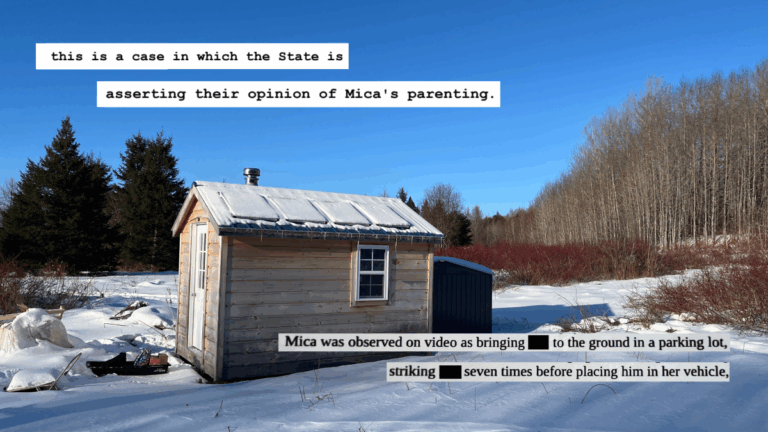As community solar farms spring up around Maine, RISK-FREE offers of GUARANTEED SAVINGS for subscribers descend on residents – in mailers and online, and even from door-to-door sales agents.
Community solar farms do offer a vital exit ramp from fossil fuel dependence and a way to democratize access to renewable power. Somewhere between half and three-quarters of Americans can’t take advantage of rooftop solar because they rent, live on sites or in structures not suited to solar panels, or have limited credit. By subscribing to a community solar farm, they can cut carbon emissions and gain modest savings on their electric bills (typically between 5 and 15 percent – from the solar credits the panels designated to them generate).
Widespread participation in community solar farms (those that generate up to 5 megawatts of power) will depend on public trust in their benefits, and that confidence hinges on government outreach and industry oversight. Maine needs a stronger state commitment to guide the growth of this new energy frontier.
‘Caught off guard’
On June 8, Gov. Janet Mills signed LD 507, which extends existing consumer protections for customers of competitive electricity providers to community solar customers. It offers consumers an opt-out from contracts (within the first week of getting bills, with some restrictions) and prevents developers from sharing consumer information. It also provides for Maine’s Public Utilities Commission (PUC) to hire an additional attorney and two consumer assistance specialists to address customer billing and legal questions related to community solar (positions that would likely be added in the fall, according to the PUC).
The law follows two years of a marketing Wild West, with approaches variously described as “hard sell,” “very aggressive” and at times “misleading.” Following the 2019 passage of LD 1711, which opened the floodgates to this scale of solar farm, “everyone got caught off guard,” noted Barry Hobbins, Maine’s public advocate. Solar firms had to register with the Maine PUC, but beyond that the state put few constraints on marketing or subscription practices.
“There’s a bit of a rush at the beginning” when states open up to community solar farms, said Keith Hevenor, communications manager of Nexamp, a solar developer active in 11 states (including Maine), adding that some other states have “been much more prescriptive” in directing solar developers.
Illinois, for example, prevents community solar marketers from saying they “guarantee savings” or “reduce your electric bill,” Hevenor added. It requires solar developers to use a standard disclosure form; a sample appears on the state’s website, with details on consumer rights and complaint procedures. (Maine’s disclosure forms vary slightly, according to the PUC, which encourages potential subscribers to read the fine print on the contractual agreements.)
A need for greater interagency coordination
In Maine, high-pressure marketing prompted confused electricity customers to contact the Office of the Public Advocate (OPA). Having pursued action against a competitive electricity supplier, Electricity Maine, for unscrupulous practices, OPA recognized the long-term harm that even a single corporation can inflict on public trust. Consumers burned by that deception were twice shy about community solar offers.
OPA has found no major abuses and “nothing fraudulent” in the marketing of community solar farms, Hobbins said, but it put up a web page to help educate consumers. More widespread consumer education is needed, he said, but “we are not equipped financially (to run a community solar information clearinghouse) nor is it part of our mission.”
Early this year, the Boston-based company EnergySage launched a for-profit Community Solar Marketplace, which allows consumers to compare the local solar farms seeking subscribers. The platform took “millions to build,” said founder and CEO Vikram Aggarwal, and developers pay to list projects. States like Connecticut use a branded version of its platform for rooftop solar with additional screening and exclusion, an approach that he said “doesn’t really cost (the state) a lot.”
Hobbins, who is on the verge of retirement, recommends that the Governor’s Energy Office, OPA and PUC do some “intense cooperation” and host a stakeholder meeting for those developing or want to develop community solar farms in Maine to outline the state’s expectations. “They need to know as a group that someone is looking over their shoulder,” Hobbins said. “That is extremely important.”
Asked whether he supported such a meeting, the director of the Governor’s Energy Office, Dan Burgess, indicated that while there’s been no formal discussion, his office is open to that idea. He sees LD 507, which gives the PUC “authority to set standards, requirements and rulemaking,” as a first step toward a more coordinated inter-agency response on community solar.
There are already indications, though, that further steps may be needed.
Billing: Caught between the utility and solar provider
Subscribers to community solar farms receive bills from both their electric utility and the solar generator, an awkward triangulation made worse by the fact there’s no requirement for synced billing periods or for utilities to share subscribers’ electricity usage information with the solar generator. That data is critical for solar companies to make good on their commitment to consumers, but Maine’s leading utilities have offered no firm timeline on delivering it.
Dual (and potentially dueling) bills could be a particular deterrent to electricity customers who have endured years of erroneous bills from Central Maine Power (full disclosure; I count myself among them).
In the states that permit community solar farms, billing practices are evolving. “That’s an ongoing challenge for us and for the community solar industry,” Hevenor said. New York is moving toward a consolidated system in which customers would receive a single bill from their utility that summarizes the credits generated by their solar farm panels.
That solution assumes a competent utility willing to collaborate constructively with solar corporations – not something Maine enjoys in its dominant electric utility.
The PUC may have to order utilities to provide a consolidated bill that reflects solar credits in a timely manner, said David Costello, climate and clean energy director for the Natural Resources Council of Maine. “A consumer-owned utility would be much more aligned with this sort of data management and billing, and more likely to get this right.”
Reaching ‘risk-free’
“Getting this right” at every level – from marketing and subscriber enrollment to billing – is essential. The clean power from community solar farms will likely dwarf power generated by rooftop solar arrays, making them key to Maine’s clean energy transition.
Residents need to realize that these solar farms are not “community” institutions in the sense that a traditional farm or local food co-op might be. Most are run by out-of-state corporations, some motivated by environmental values and some by the financial return.
To get cleaner, renewable power on terms that work for Maine, the state must inform and protect electricity consumers. Only then can this new frontier of solar power be truly “risk-free.”
Update on a previous column:
In mid-April, I wrote a piece in support of LD 125, a ban on aerial spraying in silviculture sponsored by Senate President Troy Jackson (D-Allagash). Both the Senate and House have now approved this measure and sent it to Gov. Mills for her signature.








